Androsace septentrionalis (Pygmyflower) - photos and description
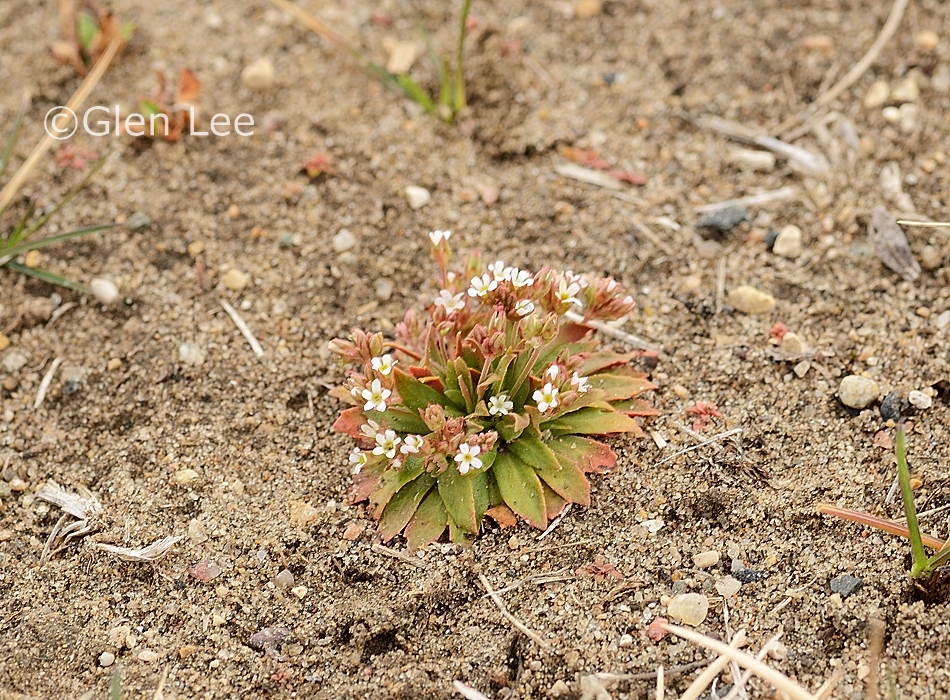
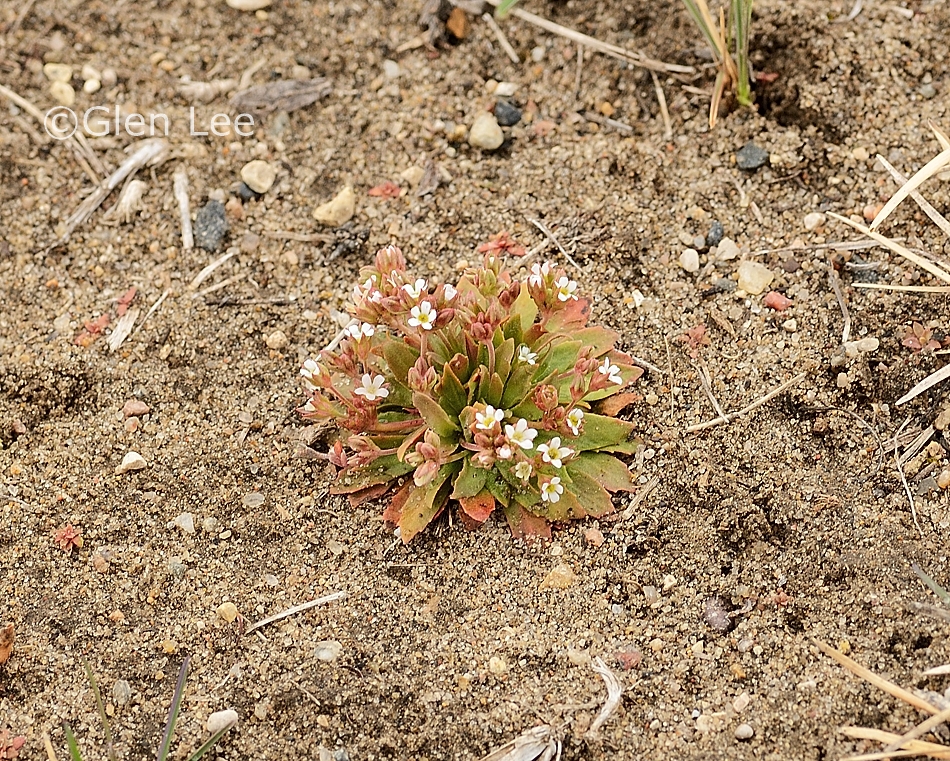
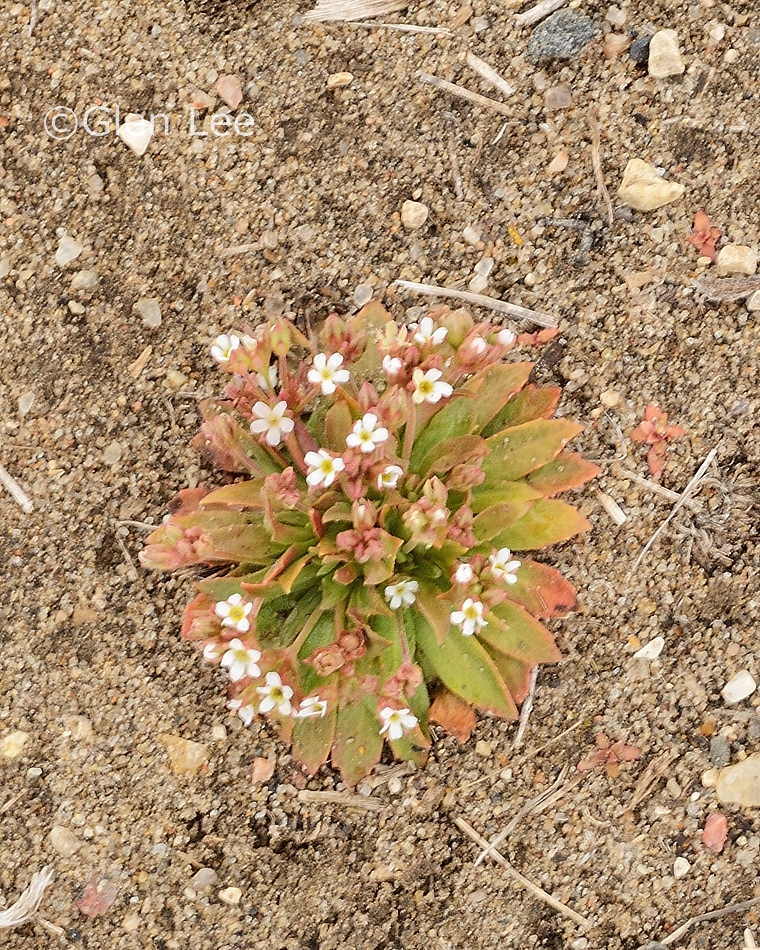
Looking straight down on plant
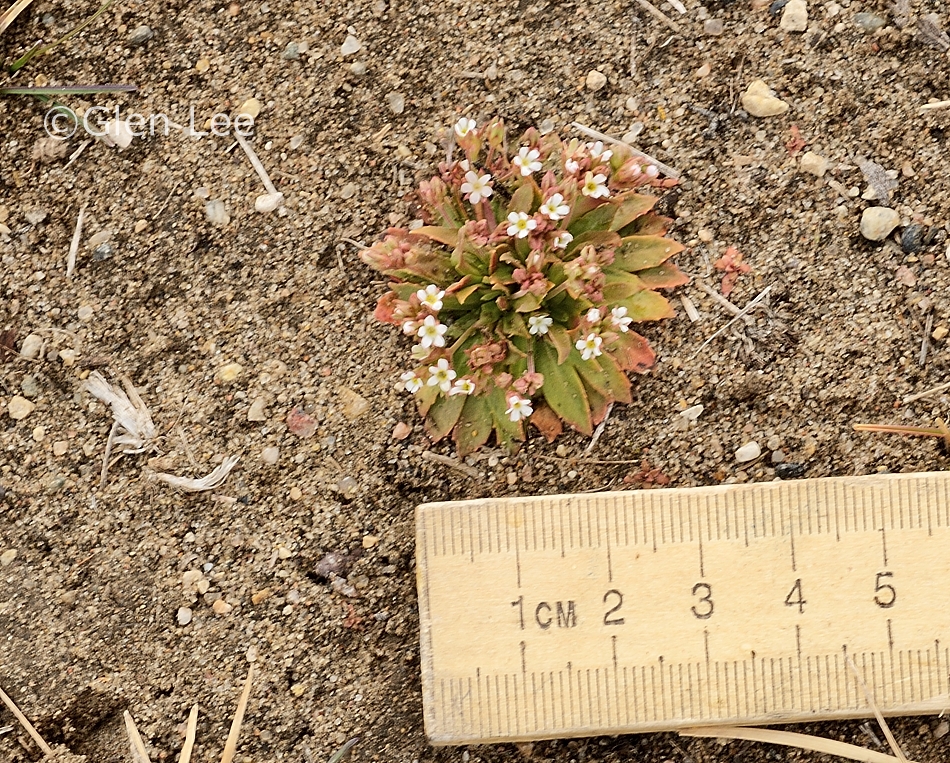
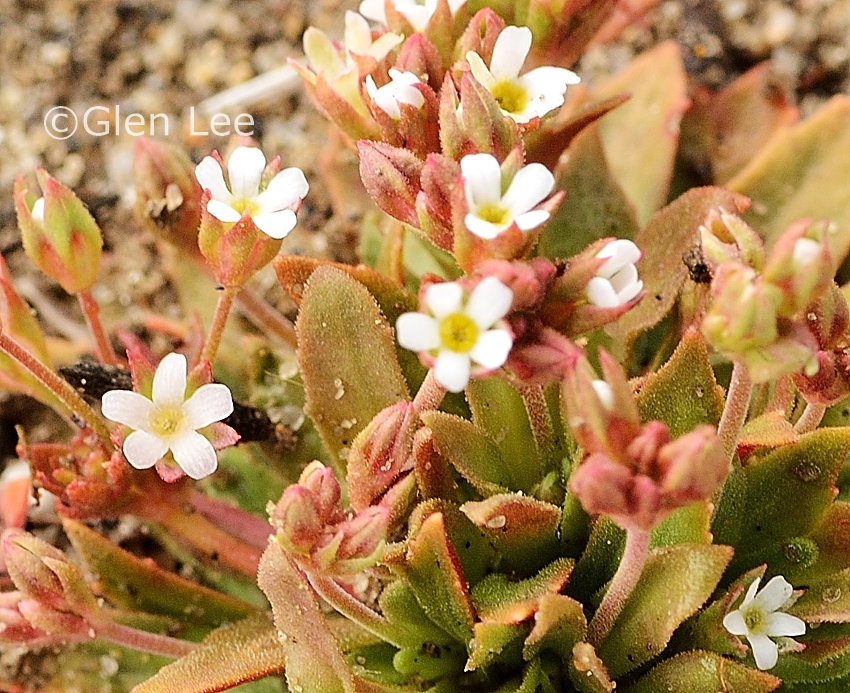
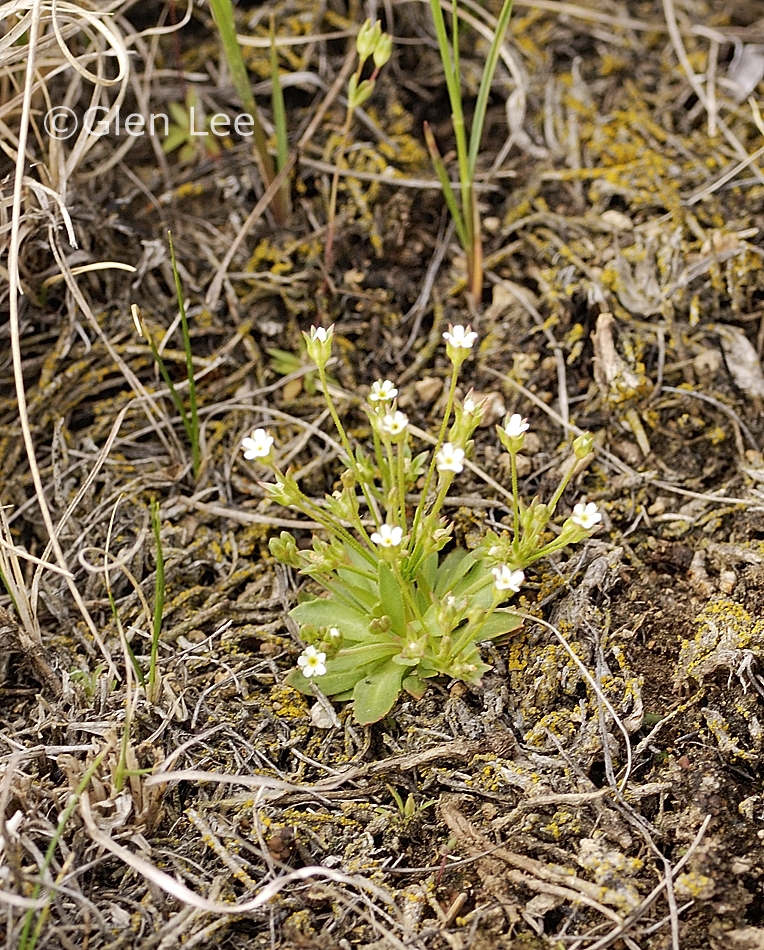
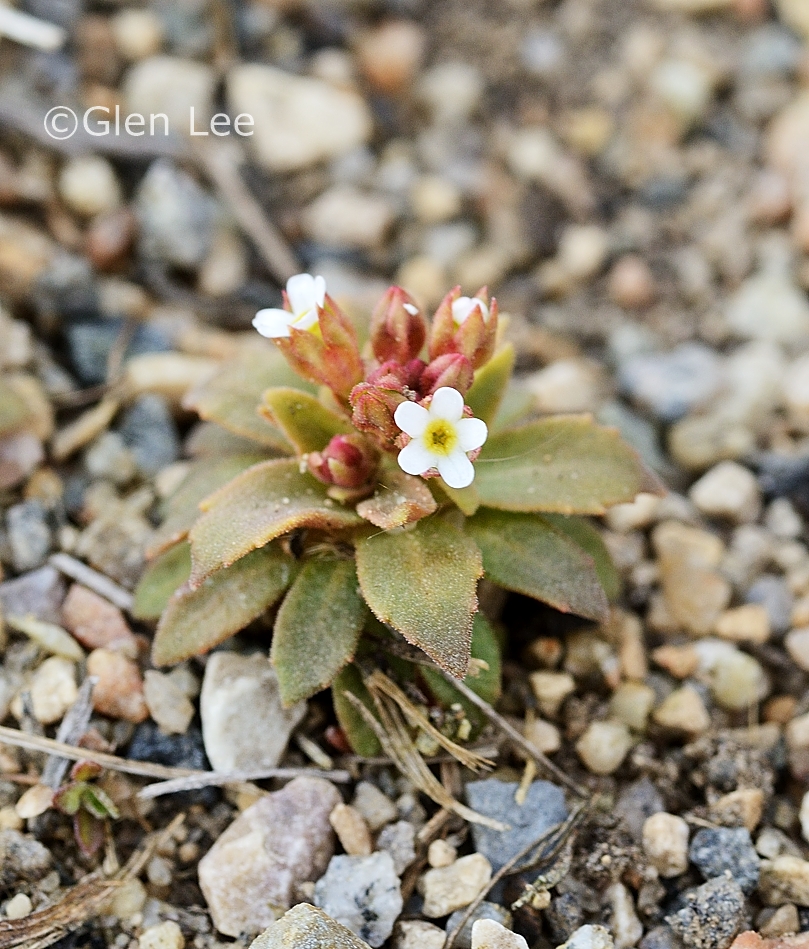
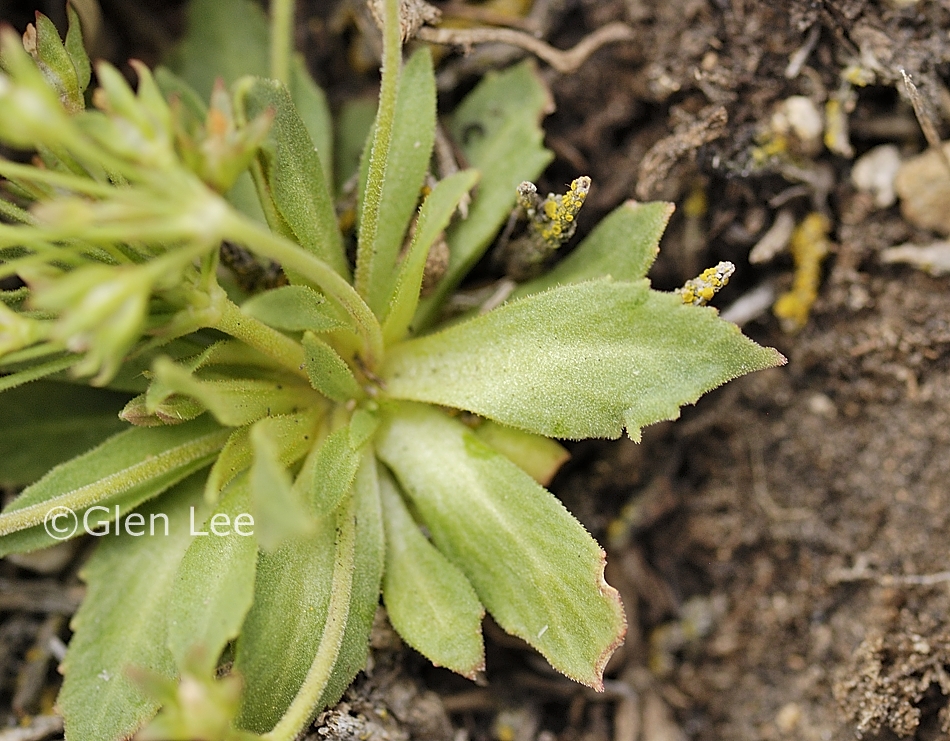
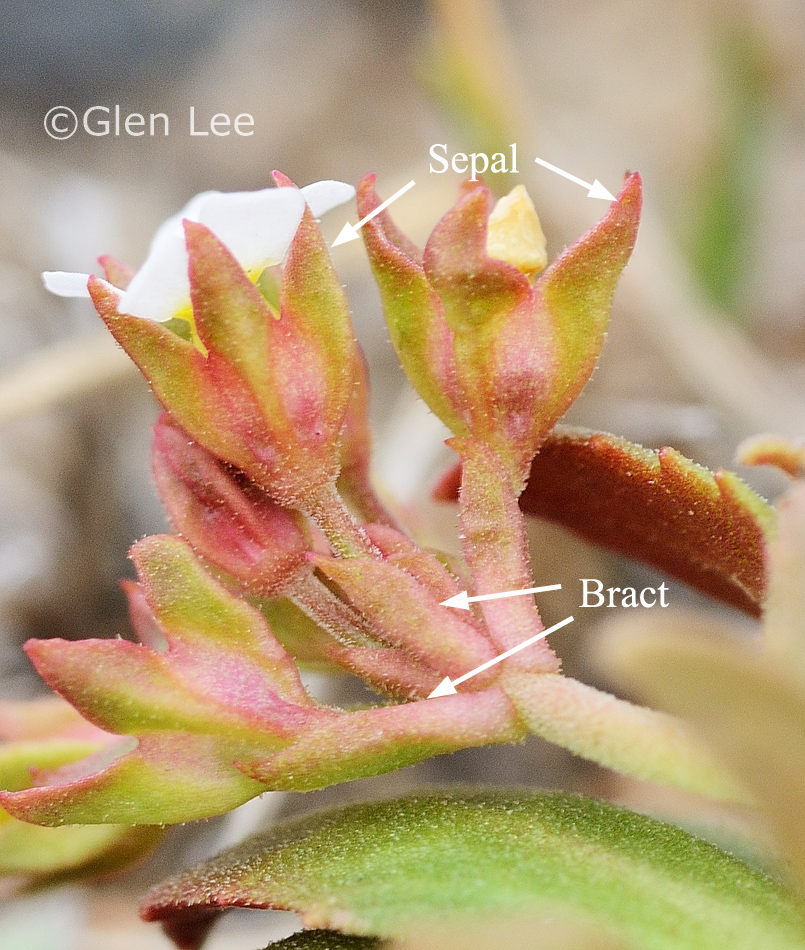
Bracts narrowly lanceolate.
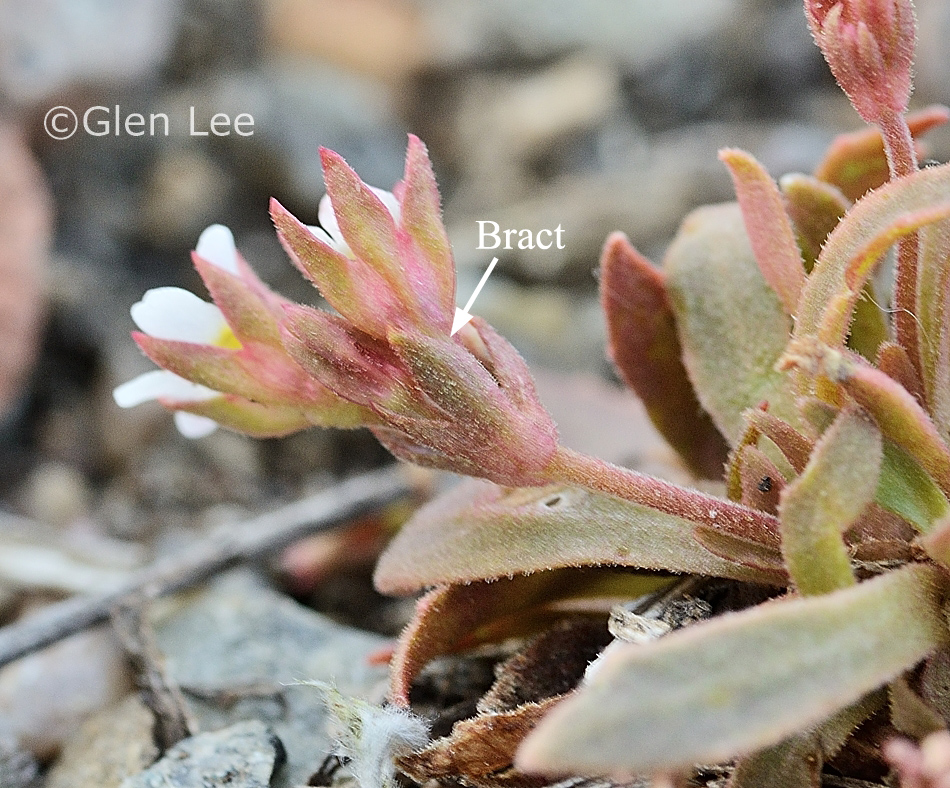
Bracts lanceolate.
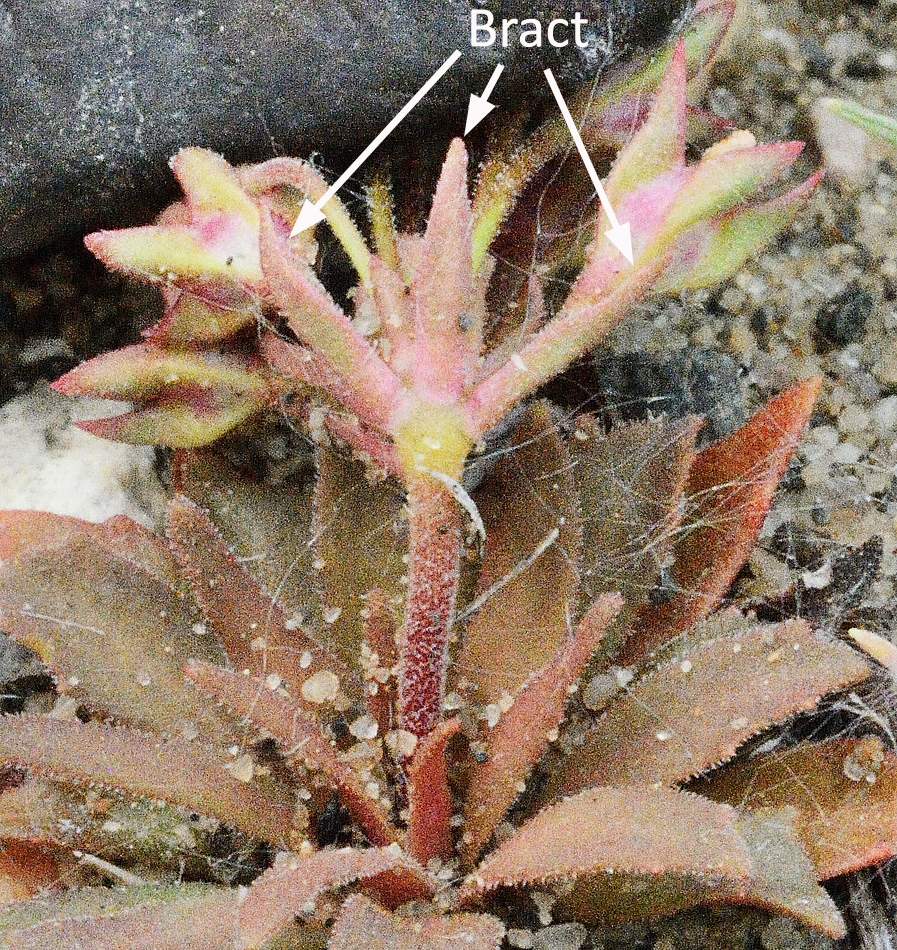
Bracts linear lanceolate.
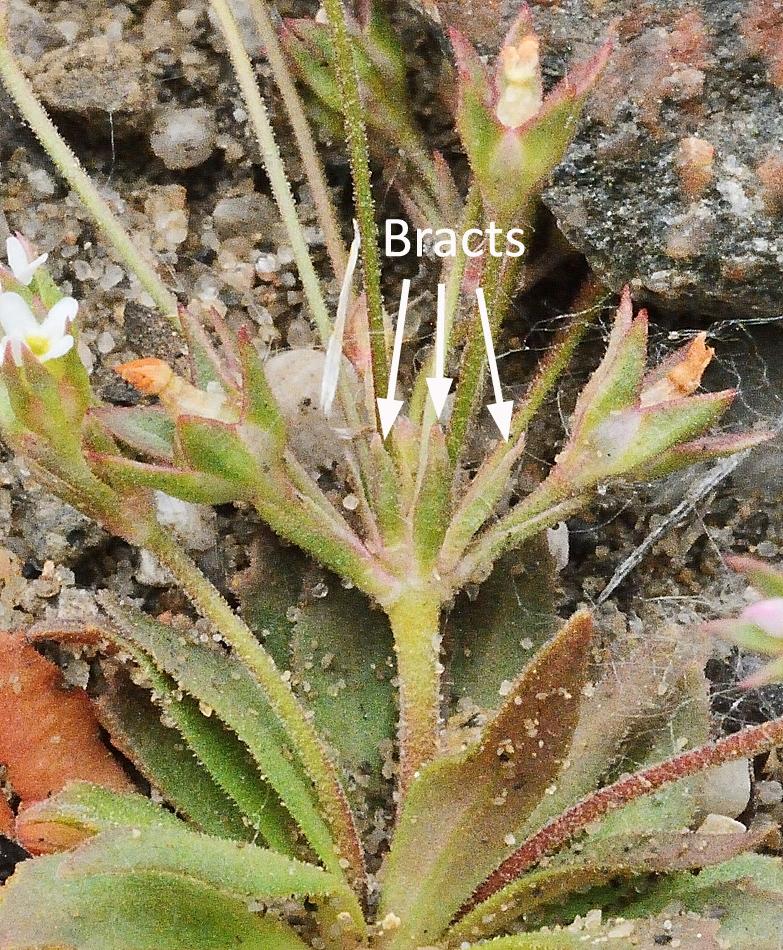
Bracts linear lancelolate.
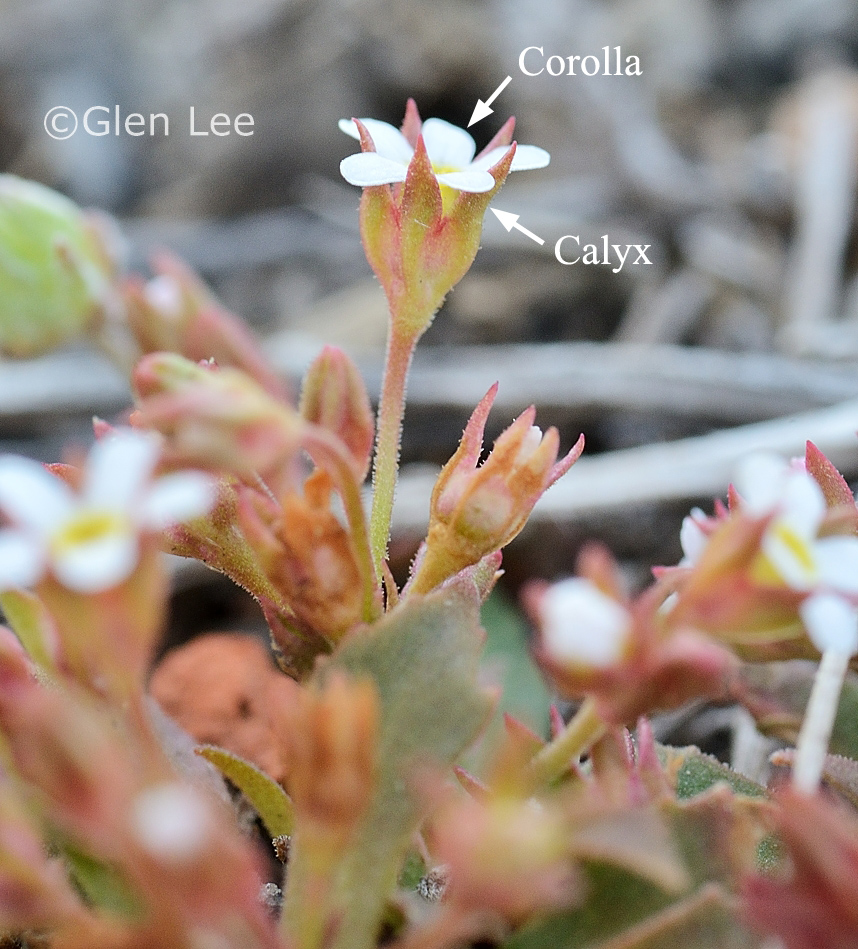
Calyx can be > than corolla.
Origin: Native.
General: Weedy, tiny annual with a rosette of basal leaves and bearing terminal flower umbels. Scapes often reddish in colour. Foliage puberulent.
Flowers: Flowers grow in umbels, are white with a yellow eye, we measured a flower at 3 mm diameter. Involucral bracts at the base of the flower umbels, the involucral bracts are narrowly lanceolate. We observed the calyx may be > than the corolla, this conflicts with Budd's Flora and Flora of Alberta which state the calyx should = the corolla in this species.
Leaves: Leaves all basal, elliptical to obovate, having a few teeth at their tip, leaf highlighted in photo above was 15 mm long by 5 mm wide. Leaves have very short hairs.
Height: Height listed in Flora of Alberta to 25 cm (!), we measured plants (scapes) to 3 cm tall.
Habitat: Habitat is dry and eroded soil.
Abundance: Common.
Similar species: This plant is quite similar to Androsace occidentalis, the other Androsace species native to Saskatchewan. To distinguish between the two, you examine the bracts. The bracts of A. septentrionalis are more narrow - narrowly lanceolate to awl shaped and tend to be appressed to the stem or nearly appressed to the stem, while the bracts of A. occidentalis are more broad - ovate shaped and tend to be in a whorl growing in a 90 degree angle to the flowering stem. Here is a photo of the bracts of A. occidentalis:
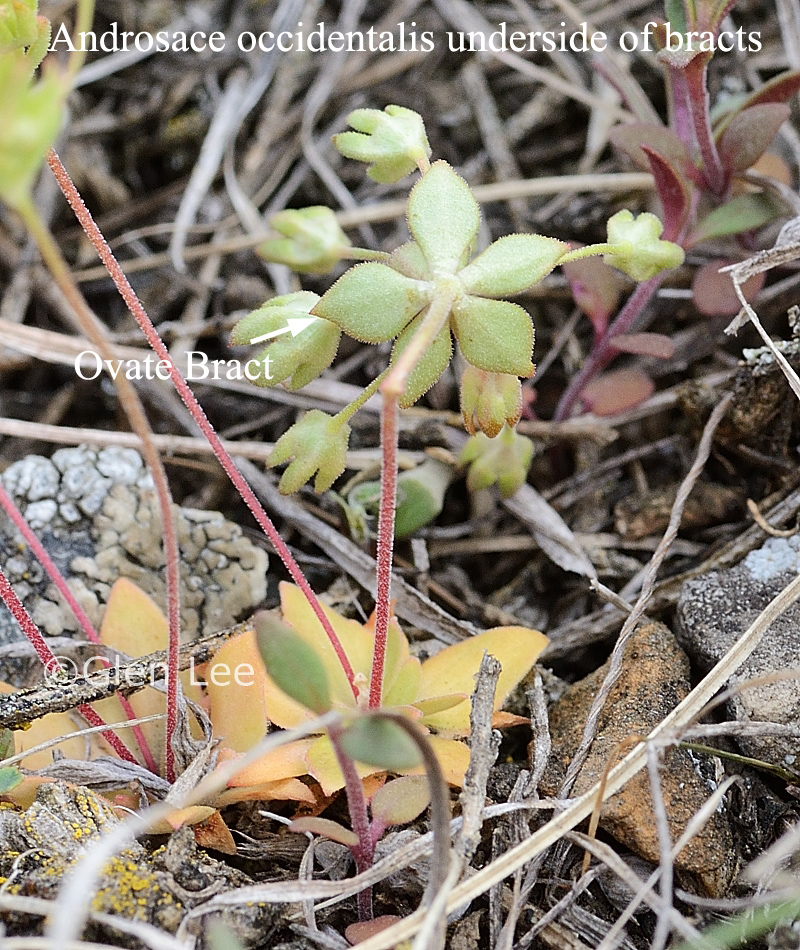
When and where photographed: Photos taken April 25th and May 20th, sandy roadside in Douglas Provincial Park, about 200 km northwest of Regina, SK, April 30th, edge of gravel parking lot in Buffalo Pound Provincial Park about 70 km west of Regina, SK, and, May 8th, grassland in the Buffalo Grass Eco Reserve, about 200 km southeast of our home in Regina, SK.